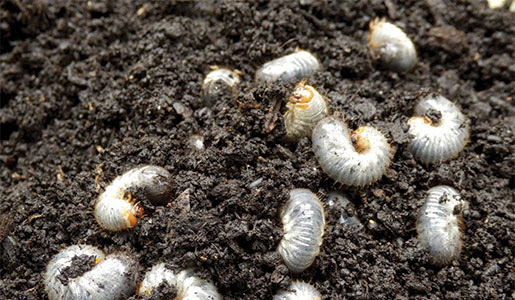 When you do all the things necessary to achieve a healthy and robust lawn, you also make your lawn incredibly attractive to one of its biggest enemies. Turf grass needs thick juicy roots in order to thrive. The healthier the roots, the more appetizing they are to grubs.
When you do all the things necessary to achieve a healthy and robust lawn, you also make your lawn incredibly attractive to one of its biggest enemies. Turf grass needs thick juicy roots in order to thrive. The healthier the roots, the more appetizing they are to grubs.
Grubs are stubby, white worms that are about an inch long. They are the larval version of several varieties of beetles. Young grubs will begin feeding in the summer and eat the most in early fall. They then remain in the ground over the winter and resume feeding in the spring before transforming into adult beetles.
Obvious grub damage means that much of your roots have already been eaten. If your turf looks dead or dying, try pulling it up from the ground. If it easily separates from the soil, you most likely have grubs. If you see numerous fat, white worms when you pull it up, you definitely have them.
Extensive grub damage calls for a fast-acting pesticide treatment as soon as possible. It may also be necessary to reseed the affected area. Preventative treatments also exist which seek to kill off the eggs before any damage can be done. This latter option is preferred if at all possible.
That said, there is such a thing as a ‘safe’ amount of grubs. If your investigating only digs up a few grubs, you should be able to forego any chemical treatment. If you are unsure about next steps, or have any questions about grubs in general, contact us today and we’ll be happy to discuss any questions you have.


